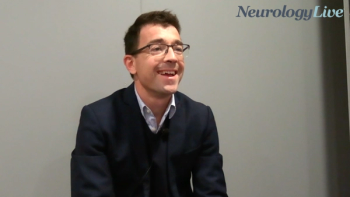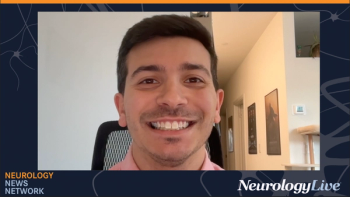
Protein Waste Clearance in Aging and Neurodegeneration: Lorraine Kalia, MD, PhD
The associate professor and clinician-scientist at the University of Toronto spoke to the current understanding of protein waste clearance in neurodegeneration. [WATCH TIME: 4 minutes]
WATCH TIME: 4 minutes | Captions are auto-generated and may contain errors.
"I think there's lots of exciting work in understanding the way that cells get rid of proteins through the proteasome, through the autophagy–lysosomal system, through the endosomal–lysosomal system, and also through these chaperones, and I think that we're starting to see a lot of uptake in drug development to try and enhance these systems."
In a plenary session on protein aggregate clearance in aging and neurodegeneration at the
Kalia highlighted both intracellular and extracellular mechanisms that work to preserve protein homeostasis. Intracellularly, systems such as the proteasome, the endosomal-lysosomal pathway, autophagy, and molecular chaperones serve to identify, process, and degrade misfolded or toxic proteins, and she noted that these both diverse and redundant mechanisms are evolutionarily conserved, underscoring their importance for cell survival. On the extracellular front, Kalia discussed the role of glial cells in the uptake of protein aggregates and emphasized increasing scientific interest in the glymphatic system.
This recently characterized waste clearance mechanism involves the directional flow of cerebrospinal fluid (CSF) through the brain to remove metabolic waste, including aggregated proteins. Importantly, glymphatic activity appears to be enhanced during sleep, a link that may help explain emerging associations between sleep disturbance and the onset of neurodegenerative conditions. Kalia noted that enhancing glymphatic function or improving sleep quality may present novel opportunities for therapeutic intervention.
She also pointed to the potential of pharmacologic strategies aimed at boosting protein degradation—such as proteolysis-targeting chimeras (PROTACs)—which are already in use in oncology and could possibly be adapted for neurological applications. Although these technologies have not yet reached clinical trials for PD or related conditions, they represent a promising area of translational research. In that vein, Kalia emphasized the importance of moving beyond a single-protein framework for understanding neurodegeneration. As evidence mounts that multiple pathological proteins coaggregate in individual patients, broad-acting clearance strategies may offer a more effective approach than those targeting individual misfolded species.
Newsletter
Keep your finger on the pulse of neurology—subscribe to NeurologyLive for expert interviews, new data, and breakthrough treatment updates.



































